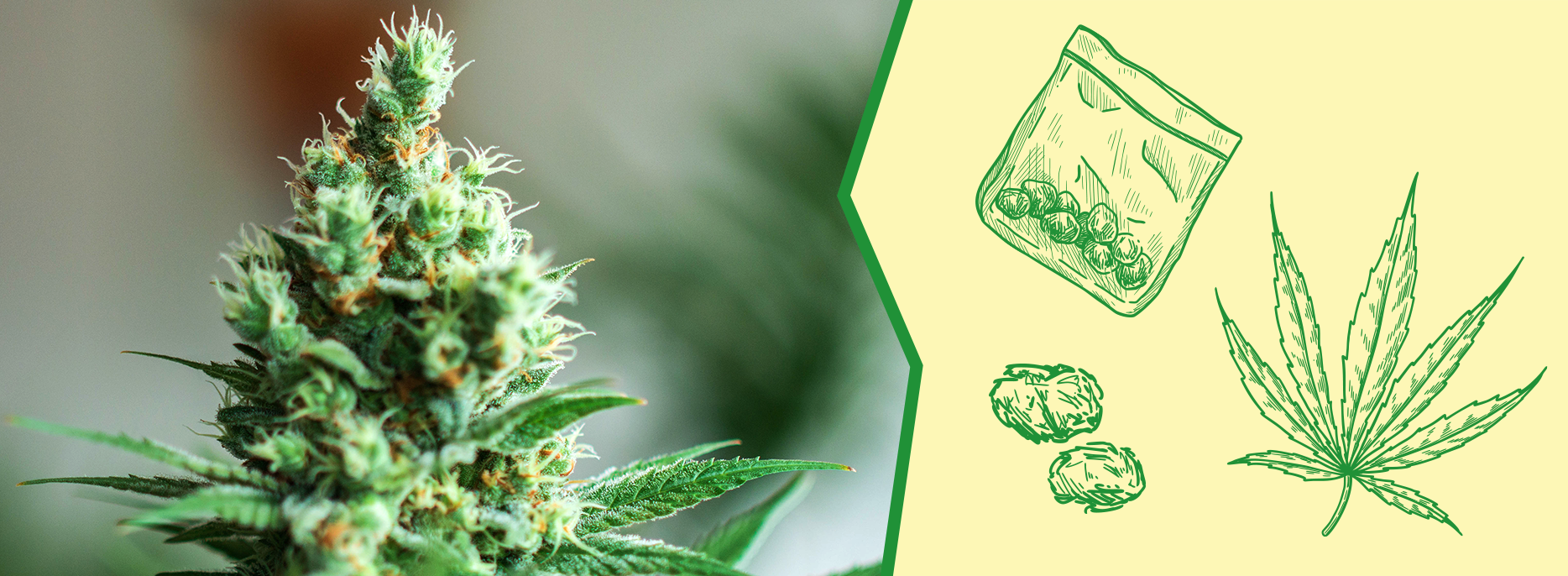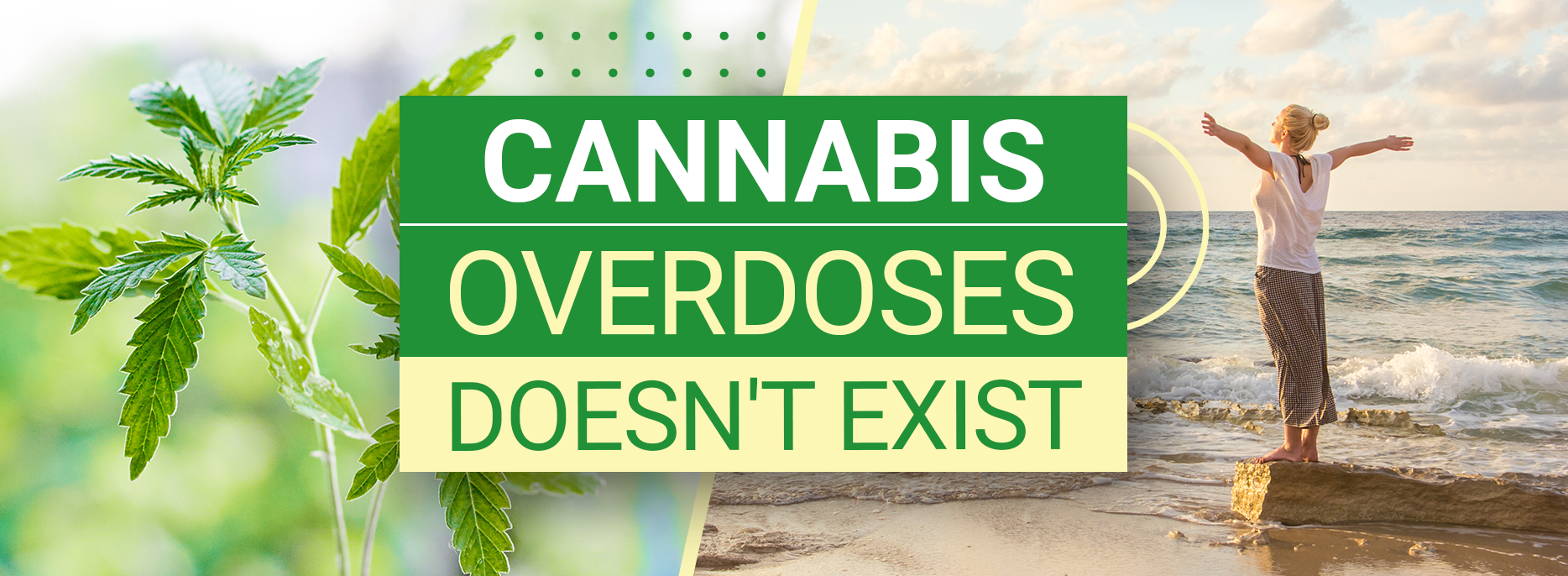We’ve been raised to believe that drugs are bad for us. This included cocaine, methamphetamine, magic mushrooms, and yes, cannabis. The only problem is that there are different classifications of drugs based on their health risks. Informally, people still believe that any psychoactive substance is dangerous, since it affects your brain in weird and unpredictable ways. There are a couple of myths attached to cannabis, such as that it eventually leads to cerebral degeneration.
Today, we’re going to cover the biggest myth of them all – the existence of cannabis overdoses. While you can overdose on cocaine, LSD or meth, for instance, there is no such thing for marijuana. No matter how much you smoke or how much you ingest, cannabis will never put your life at risk. That’s because there’s a chemical and biological synergy between our bodies and the chemical compounds found in cannabis.
Why can’t you overdose on cannabis?

Overdosing on a psychoactive substance means that you consume that substance in levels greater than recommended, which leads to negative side-effects and potential death. This happens with cocaine, for instance. The life-threatening risks of dangerous substances such as cocaine are there, and everyone knows it. With cannabis, though, it’s an entirely different discussion.
To start with, the human body is chock-full of cannabinoid receptors, and the Endocannabinoid System (ECS) is proof for that. Named after the cannabis plant, this system is our body’s natural regulatory system for multiple physiological functions. In the words of the great naturopathic practitioner Dr. Dustin Sulak, “The endogenous cannabinoid system, named after the plant that led to its discovery, is perhaps the most important physiologic system involved in establishing and maintaining human health. In each tissue, the cannabinoid system performs different tasks… But the goal is always the same: homeostasis, the maintenance of a stable environment despite fluctuations in the external environment.”
Even the Center for Disease Control and Prevention (CDC) says that a “fatal overdose is unlikely” with cannabis. Of course, if you consume too much, you may lose your focus and concentration so much that you may put your life at risk if you drive, for instance. But that’s another thing altogether. Cannabis itself doesn’t harm you. Your recklessness does. A psychoactive substance alters your consciousness, minimizes your focus, awareness, and reaction times. It’s self-evident that you should try to sit tight and enjoy the psychedelic state, instead of going out and doing things that require your full focus.
What’s the worst thing that can happen when consuming cannabis?
As we said, cannabis overdoses don’t exist in the traditional sense that society has come to use. However, you can consume too much cannabis, which leads to more intense psychoactive effects, and potential side effects. None of them are life-threatening, though. Some of them include:
- Nausea
- Headaches
- Fatigue or lethargy
- Dry eyes
- Slower reaction times
- Anxiety
- Confusion
- Cotton mouth
- Dizziness
- Increased heart rate
In very rare cases, cannabis may also lead to paranoia, vomiting, hallucinations, and panic attacks. But that’s only if you overstep your tolerance level by at least double or triple the quantity. You’d have to be really irresponsible to do that. Why do you think every weed-based product you buy has a recommended dose section? Because going above it may be too much for your tolerance level, and the potent effects may lead to undesirable side-effects like the ones listed above.
So far, there have been no deaths caused by cannabis consumption. And society has been consuming cannabis, even irresponsibly so, for decades, in the modern times. In the grand scheme of things, we’ve been doing it for millennia, during religious or spiritual rituals. And no one died because of it until now. That has to be pretty telling, right?
How does cannabis affect the human body?

The cannabis plant influences your body on a chemical level, through the so-called “cannabinoids”. There are a few hundreds that science has been able to identify until now, but we only care about two of them. Tetrahydrocannabinol, or THC, and Cannabidiol, or CBD, are the two most important cannabinoids in the cannabis plant. One is the main psychoactive compound that makes you stoned (THC), while the other is non-psychoactive (CBD) and most often associated with therapeutic benefits such as:
- Analgesic effects
- Antipsychotic effects
- Anti-tumoral effects
- Neuroprotective benefits
- Anti-acne effects
- Anti-depressive and anti-anxiety effects
- Sleep-promoting effects
The way this works is simple – once you smoke cannabis, the THC and CBD enter your body. Eventually, they go straight to your ECS (endocannabinoid system), where they connect to specific endocannabinoid receptors (which are native to your body). These receptors are linked to neurotransmitters in your brain, which are directly responsible for various physiological or cerebral functions. So, we can say that cannabis directly influences your brain and body to behave in particular ways.
For instance, the scientific community has found out that cannabinoids can attack cancer cells in some cases. Weed has a great potential to become an official treatment for cancer in the future. Though, the study shows that only CBD-based cannabis is effective against cancer cells. THC has a more recreational role, and it may not be as good for its therapeutic benefits. But we already knew that, so there’s nothing new there.
Conclusion to end all other conclusions
We believe we’ve covered everything there is to say about cannabis’ therapeutic benefits, and the myth behind cannabis overdoses. There is no such thing, and this myth is only perpetuated by people who sorely lack knowledge about cannabis’ effects on the human body. The fact that our Endocannabinoid System accepts external cannabinoids into our bodies, permitting them to influence our brains and bodies naturally, is already evidence enough for this synergy between cannabis and our bodies.
There are plenty of things we have yet to discover about the therapeutic potential of cannabis. Hopefully, society will stop shunning cannabis and eliminate the stigmata placed on it. Rather, we should continue studying this wonderful plant, searching for more ways to treat medical conditions we still have problems with.




